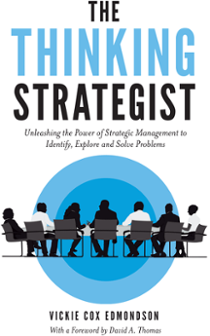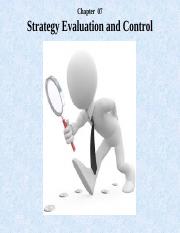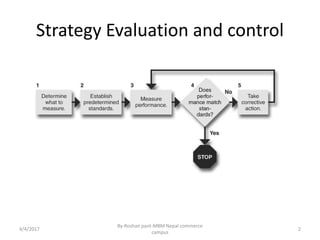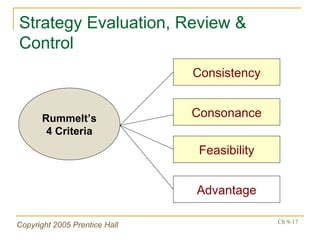Strategic evaluation and control are essential components of the strategic management process. Strategic evaluation involves the systematic assessment of an organization's strategic position and performance, while strategic control involves the monitoring and adjustment of an organization's strategy in response to the changing internal and external environment. Both of these activities are necessary to ensure that an organization is able to achieve its strategic goals and objectives.
One of the main purposes of strategic evaluation is to provide feedback on the effectiveness of an organization's current strategy. This involves analyzing the organization's internal and external environment, as well as its financial and non-financial performance. By examining these factors, managers can identify any areas of strength or weakness, as well as opportunities and threats that may impact the organization's ability to achieve its strategic goals.
There are several tools and techniques that can be used for strategic evaluation, such as SWOT (Strengths, Weaknesses, Opportunities, Threats) analysis, the Balanced Scorecard, and the McKinsey 7S Framework. These tools provide a structured approach to analyzing an organization's strategic position and performance, and can help managers identify areas where improvements or adjustments are needed.
Once an organization has completed its strategic evaluation, it can use the insights gained to implement strategic control measures. Strategic control involves monitoring and adjusting the organization's strategy in response to changes in the internal and external environment. This may involve making changes to the organization's goals and objectives, as well as the tactics and actions needed to achieve them.
There are several ways in which an organization can implement strategic control measures. One approach is to use performance metrics and targets to monitor the organization's progress towards its strategic goals. These metrics can be used to identify areas where performance is falling short, and corrective action can be taken to address any issues. Another approach is to use scenario planning, which involves developing and testing different scenarios based on different assumptions about the future, in order to identify potential risks and opportunities.
Overall, strategic evaluation and control are essential components of the strategic management process, and are necessary to ensure that an organization is able to achieve its strategic goals and objectives. By regularly assessing and adjusting its strategy, an organization can remain responsive to changes in the internal and external environment, and continue to thrive and grow in the face of ongoing challenges and opportunities.








